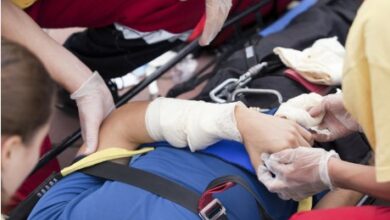Illuminating Health: The Power of Medical Animations

Communication has emerged as a pivotal aspect of patient education, medical training, and research in healthcare. Among the various tools available, medical animations have taken center stage. These dynamic visualizations bridge the gap between complex medical concepts and non-specialist’s understanding. In this article, we will explore the significance of medical animations, their diverse applications, and their profound impact on the world of medicine.
Enhancing Patient Education
Medical animations are invaluable educational tools in an era where patients actively seek to understand their health and treatment options. They simplify intricate medical procedures and conditions, breaking them into digestible, visual formats. Whether it’s explaining a surgical procedure, illustrating the progression of a disease, or depicting the mechanism of action of a medication, animations provide patients with a clear and engaging visual representation. This not only fosters patient comprehension but also aids in informed decision-making. Moreover, these animations can be customized to cater to diverse patient populations, accommodating different languages and levels of health literacy.
Revolutionizing Medical Training
Medical animations are not solely for patients; they also transform how medical professionals are trained. Traditionally, medical students relied on textbooks, lectures, and static images to grasp complex anatomical and physiological concepts. However, with the advent of 3D animations and virtual simulations, students can now interact with anatomical structures and witness medical procedures in a virtual environment. This hands-on approach enhances retention and comprehension, making medical education more engaging and effective. As a result, medical animations foster a new generation of healthcare practitioners better prepared to deliver quality care.
Advancing Research and Development
In the realm of medical research and development, medical animations are catalyzing breakthroughs. Scientists and researchers use animations to visualize molecular processes, drug interactions, and cellular mechanisms. These animations facilitate collaboration and communication among interdisciplinary teams, helping researchers convey their findings more effectively. Moreover, animations are crucial in presenting research findings to a broader audience, making complex discoveries accessible to policymakers, funding agencies, and the public. By democratizing information, medical animations are accelerating the pace of medical innovation.
Conclusion
In an age where information is at our fingertips, medical animations have emerged as indispensable tools in healthcare. They empower patients to make informed decisions, enhance the training of medical professionals, and catalyze groundbreaking research. The dynamic visualizations make complex medical concepts comprehensible and stimulate curiosity and engagement.
As technology advances, the role of medical animations in medicine is set to expand, revolutionizing the way we learn, practice, and innovate in healthcare. The future is illuminated by the power of medical animations, making the complex world of medicine more accessible and transparent to all.




